Have you ever wanted to watch your favorite shows on the big screen without all the complicated entanglement of going through a cable box? Today, it’s easier than ever to watch TV on a projector with a seamless transition from traditional cable viewing! Say goodbye to messy cords and cables strewn across the room and learn how to watch your favorite programs without having to pay for a costly cable subscription or get frustrated with tangled wires. This guide will cover everything you need to know about how to watch TV on a projector without a cable box.
Methods of watching TV on a projector without a cable box
HDMI connection
An HDMI connection is the most common method of connecting a TV to a projector without a cable box. This method allows you to mirror your laptop or desktop screen to the projector, allowing you to watch shows and movies from streaming services on a bigger screen.
This method is great for those who already have a streaming service subscription, as you can easily access it through your laptop or desktop and mirror it to the projector. However, keep in mind that you will need a strong and stable internet connection for smooth streaming.
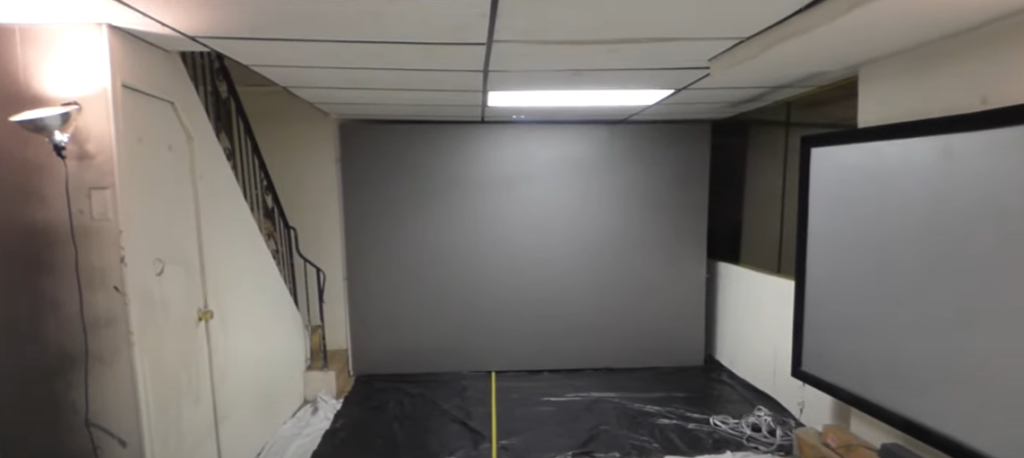
VGA connection
Another method of connecting your TV to a projector without a cable box is through a VGA connection. This method, however, may not support audio transmission and may require an additional audio cable for sound output.
To use this method, you will need a VGA cable and a VGA port on both your TV and projector. Simply connect one end of the VGA cable to the VGA port on your laptop or desktop and the other end to the VGA port on your projector. Just like with the HDMI connection, you may need to change the input source on your projector to display the content from your laptop or desktop.
Component connection
If your TV and projector do not have HDMI or VGA ports, you can still connect them using a component connection. This method uses three separate cables for video (red, green, and blue) and two additional cables for audio (white and red). You may need to purchase these cables separately.
To use this method, connect the corresponding colored ends of the video cables to the matching component ports on your TV and projector. Then, connect the white and red audio cables to their respective ports. Again, you may need to change the input source on your projector to display the content from your laptop or desktop.
S-Video connection
S-Video is another option for connecting your TV to a projector without a cable box. This method is similar to the component connection but only uses one cable instead of five. However, this method may result in lower-quality video compared to other methods.
To use this method, you will need an S-Video cable and an S-Video port on both your TV and projector. Connect one end of the S-Video cable to the S-Video port on your laptop or desktop and the other end to the S-Video port on your projector. Again, you may need to change the input source on your projector.
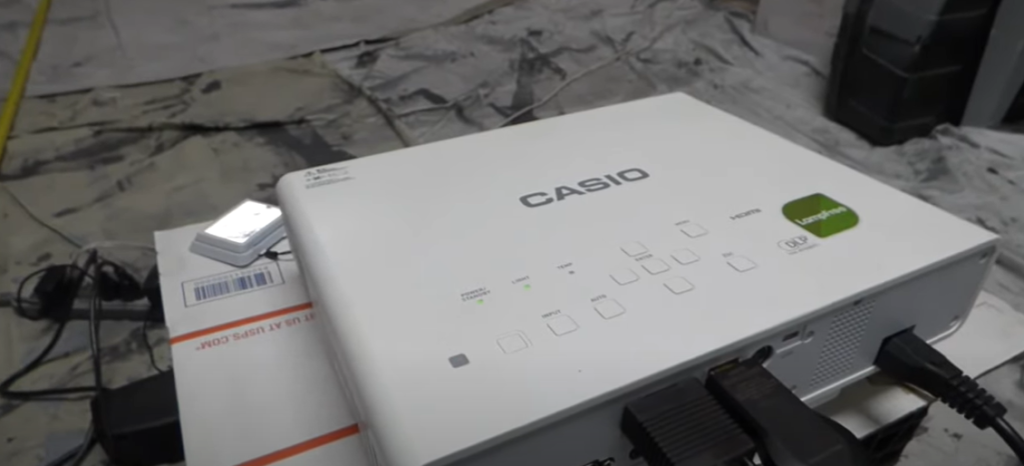
Wireless connection
If you do not want to deal with cables, you can also connect your TV to a projector wirelessly. This method requires a wireless HDMI transmitter and receiver set, which allows you to transmit the video and audio signals from your laptop or desktop to the projector.
To use this method, simply connect the HDMI transmitter to your laptop or desktop and the HDMI receiver to your projector. The two devices should automatically pair and you can start streaming your favorite shows and movies wirelessly.
Smartphone connection
If you prefer to watch content from your smartphone on a projector, you can do so with a few simple steps. Most newer smartphones have the option to cast their screen to other devices wirelessly.
To use this method, make sure your TV and projector are connected to the same Wi-Fi network. Then, on your smartphone, go to Settings > Connected Devices > Cast. Select your projector from the list of devices and your smartphone screen will be displayed on the projector.
DVD player or Blu-ray player connection
If you have a DVD player or Blu-ray player, you can also use it to watch movies on your projector. All you need to do is connect the player to the projector using an HDMI cable, ensuring a seamless and high-quality video transmission. Once connected, simply change the input source on your projector to display the captivating content from the player. Now, you can enjoy the immersive experience of watching movies on a larger screen, bringing your entertainment to a whole new level [1]!
Direct connect devices
Google Chromecast
Google Chromecast is a media streaming device that allows users to display content from their smartphones, tablets or computers on their TVs. It works by simply plugging it into the HDMI port of the television and connecting it to Wi-Fi.
One of the main advantages of using Google Chromecast is its versatility. It supports a wide range of apps such as Netflix, YouTube, Hulu, and more, making it a great option for streaming your favorite shows and movies.
In addition to streaming media, Google Chromecast also allows users to mirror their device screens on the TV. This makes it useful for presentations or simply sharing photos and videos with friends and family.
Another benefit of using Google Chromecast is its affordable price point compared to other streaming devices. It’s a budget-friendly option for those looking to enhance their TV viewing experience.
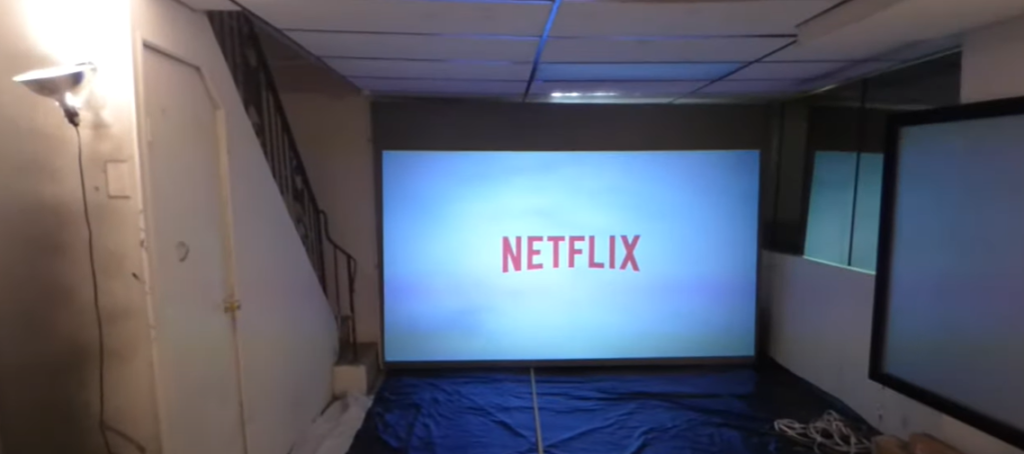
Amazon Fire TV Stick
Similar to Google Chromecast, the Amazon Fire TV Stick is a portable streaming device that allows users to access various apps and content on their TVs. It connects to the HDMI port of the television and requires a Wi-Fi connection.
One unique feature of the Amazon Fire TV Stick is its voice remote with Alexa integration. This allows users to search for content, control playback, and even ask questions using voice commands.
The Amazon Fire TV Stick also offers access to a wide range of apps, including popular streaming services like Netflix, Prime Video, and HBO. Additionally, it can play games and stream music as well.
For those who are already invested in the Amazon ecosystem, the Fire TV Stick offers a seamless integration with other Alexa-enabled devices. This makes it easy to control your TV using voice commands.
Apple TV
Apple TV is a streaming device by Apple that connects to your television and allows you to access a variety of apps and content. It can be controlled using a remote or through voice commands with Siri.
One of the standout features of Apple TV is its integration with other Apple devices. This allows users to easily stream content from their iPhones, iPads, or Macs onto their TVs. In addition to streaming media, Apple TV also offers access to games and apps. It even has a fitness app that tracks your workouts using the TV screen. Another advantage of using Apple TV is its support for 4K and HDR content. This provides a high-quality viewing experience for those with compatible TVs.
Roku Streaming Stick
Roku Streaming Stick is a small but powerful streaming device that connects to your TV’s HDMI port and gives you access to thousands of apps and channels. It also comes with a remote for easy navigation.
Roku also has a user-friendly interface that makes it easy to find and watch your favorite shows and movies. It also offers voice search capabilities for added convenience. Another great feature of Roku is its compatibility with older TVs through the use of composite cables. This makes it a suitable option for those who haven’t upgraded to a smart TV yet [2].
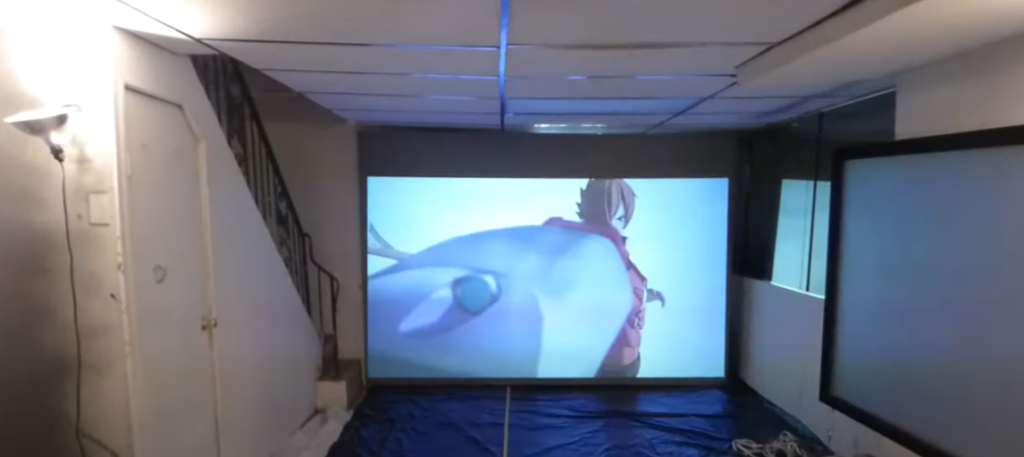
Gaming consoles
In addition to dedicated streaming devices, gaming consoles such as Playstation and Xbox also offer the ability to stream content on your TV. They have built-in apps for popular streaming services and can also play games and Blu-ray discs.
One of the main advantages of using a gaming console for streaming is that it eliminates the need for an additional device. If you already own a Playstation or Xbox, you can easily access your favorite shows and movies without purchasing a separate streaming device.
Additionally, some gaming consoles offer exclusive streaming services such as Playstation Vue or Xbox Game Pass. These provide access to live TV channels and a library of games respectively. Another benefit of using gaming consoles for streaming is the high-quality graphics and performance they offer. This makes it a great option for gamers who also enjoy streaming content on their TV.
Your home personal computer
If you have a personal computer at home, you can also use it for streaming content on your TV. This can be done through either wired or wireless connections, depending on the capabilities of your computer and TV.
To stream wirelessly from your PC to your TV, you can use devices such as Google Chromecast or Apple TV. You can also connect them physically using an HDMI cable. This allows you to access content from your computer on a larger screen, making it ideal for watching movies or giving presentations.
Using your personal computer for streaming also gives you the flexibility of accessing any online content that may not be available on streaming devices or gaming consoles. It also eliminates the need for additional subscriptions or purchases, as you can simply use your existing internet connection to access content on your TV. However, this method may require some technical knowledge and setup, so it’s best suited for those who are comfortable with technology.
Services that don’t require a cable box
Sling TV
- Sling TV is one of the most popular streaming services that doesn’t require a cable box. It offers live TV channels and on-demand content at an affordable price.
- With Sling TV, you can access more than 50 channels including ESPN, Disney Channel, CNN, HGTV, AMC, and many more. You can also customize your channel lineup by choosing one of their three packages – Sling Orange, Sling Blue, or both.
- In addition to live TV, Sling TV also offers a cloud DVR service where you can record your favorite shows and watch them later. You can also access content on multiple devices such as smartphones, tablets, computers, and smart TVs.
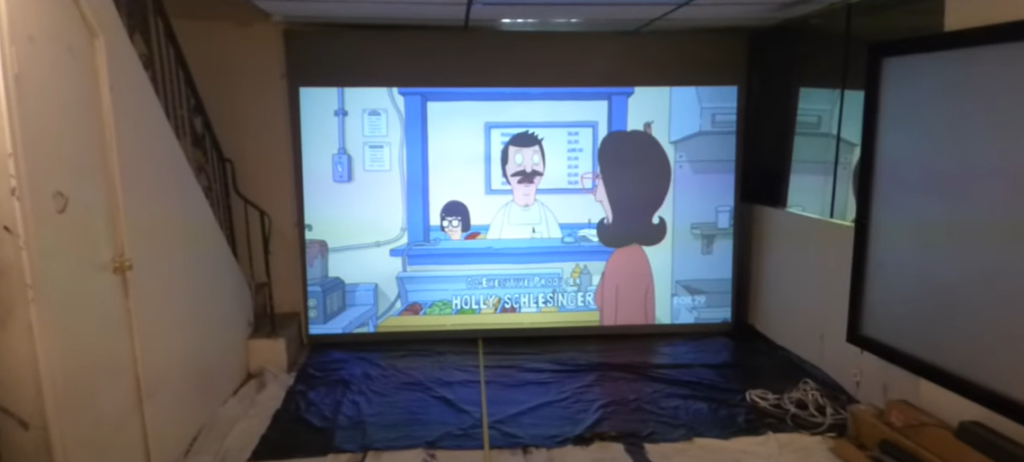
Hulu + Live TV
- Hulu + Live TV is another popular streaming service that provides access to live TV channels without the need for a cable box. It offers a mix of entertainment, news, and sports channels.
- With Hulu + Live TV, you can watch more than 65 channels including ABC, CBS, FOX, NBC, CNN, ESPN, FX, and many others. You can also add premium channels like HBO, Showtime, and Cinemax to your package for an additional cost.
- Similar to Sling TV, Hulu + Live TV also offers a cloud DVR service where you can record up to 50 hours of content and access it on multiple devices. You can also watch on-demand shows and movies from their extensive library.
YouTube TV
- YouTube TV is a newer streaming service that has gained popularity for its comprehensive channel lineup and user-friendly interface. It offers more than 85 channels including major networks, sports channels, and entertainment networks.
- With YouTube TV, you can watch live TV on up to three devices simultaneously. It also comes with unlimited cloud DVR storage so you can record as many shows as you want and keep them for up to 9 months.
- In addition to live TV, YouTube TV also offers a variety of on-demand content including movies and TV shows. It is available on most streaming devices including smart TVs, smartphones, tablets, and computers.
Philo
- Philo is a budget-friendly streaming service that focuses mainly on entertainment channels. It offers more than 60 channels including A&E, AMC, BET, Comedy Central, Food Network, HGTV, and many others.
- You can watch live TV on up to three devices simultaneously with Philo. It also offers a 30-day unlimited cloud DVR service where you can save your favorite shows and watch them later.
- Philo is available on most streaming devices such as Roku, Apple TV, Amazon Fire TV, and web browsers. It also offers a mobile app for iOS and Android devices.
Cable TV provider’s app
- Many cable TV providers such as Xfinity, Spectrum, and Cox offer their own streaming apps that allow you to watch live TV without a cable box. These apps are often free with your subscription.
- With these apps, you can access most of the channels included in your cable package on multiple devices including smartphones, tablets, and smart TVs. Some providers also offer cloud DVR service so you can record and watch your shows anytime.
- However, keep in mind that these apps usually require a stable internet connection and may not have the same features as other streaming services. They also only work if you are subscribed to their cable TV service.
How to Use a Projector as a TV?
Projectors have become increasingly popular for home entertainment, with the ability to display large images and videos on a blank wall or screen. But did you know that projectors can also be used as an alternative to a TV? So, here are some tips on using a projector as a TV.
First, you will need a projector that has an HDMI port and is capable of displaying HD content. Most modern projectors have this capability, but it’s always best to check before purchasing. Once you have your projector, you will need a source for your content. This can be a cable box, streaming device, or even a laptop. Connect the source to the projector using an HDMI cable.
Next, you will need a screen or surface to project onto. A blank white wall works well, but if you want a more permanent setup, consider investing in a projector screen for better image quality. Now that everything is set up, turn on your projector and adjust the focus and zoom until the image is clear and fills the entire screen. You may also need to adjust the color and brightness settings for optimal viewing.
One important aspect to consider when using a projector as a TV is ambient light. Projectors work best in dark or low-light environments, so make sure to dim the lights or close the curtains for better image quality. Another tip is to invest in a good set of speakers. Most projectors have built-in speakers, but they may not provide the best sound quality. Connecting external speakers will enhance your viewing experience.
If you want to switch between different sources, such as cable TV and streaming services, consider getting a HDMI switcher. This will allow you to easily toggle between different devices without constantly plugging and unplugging cables. Lastly, remember to properly maintain your projector by regularly cleaning the lens and replacing the bulb when necessary.
FAQ
How do I connect my TV to a projector without HDMI?
Connecting a TV to a projector without HDMI can be done in a few different ways. Here are some options. For example, you can use a VGA cable to connect your TV and projector. This type of cable is commonly used for computer monitors but can also be used for projectors. Another option is using an RCA cable, which has red, white, and yellow connectors. You can connect the yellow end to the video output on your TV and the other end to the video input on your projector.
How do I get local channels on my projector?
To get local channels on your projector, you will need to have a digital TV tuner. This device allows you to receive over-the-air broadcasts from local TV stations. You can then connect the output of the tuner to your projector using HDMI or other compatible cables. Another option is to use a streaming device that offers live TV options, such as Roku or Amazon Fire Stick.
Useful Video: FAST AND EZ HOW TO TURN YOUR PROJECTOR INTO A SMART TV
Conclusion Paragraph
So, if you want to watch TV on a projector without a cable box, you have multiple options to choose from. You can use a streaming device like Amazon Fire Stick, Roku, or Chromecast to access various streaming services and watch TV on your projector. Another option is to connect your laptop or computer directly to the projector and stream TV shows or movies through a web browser. Additionally, you can also use an antenna for local channels and connect it to your projector to watch live TV.
References:
- https://downhomedigital.net/home-projectors/watch-tv-on-projector-without-cable-box/
- https://pointerclicker.com/how-to-watch-tv-on-projector-without-cable-box/

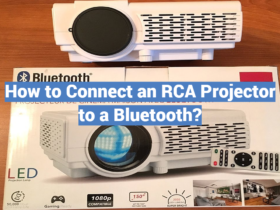
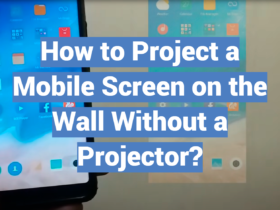


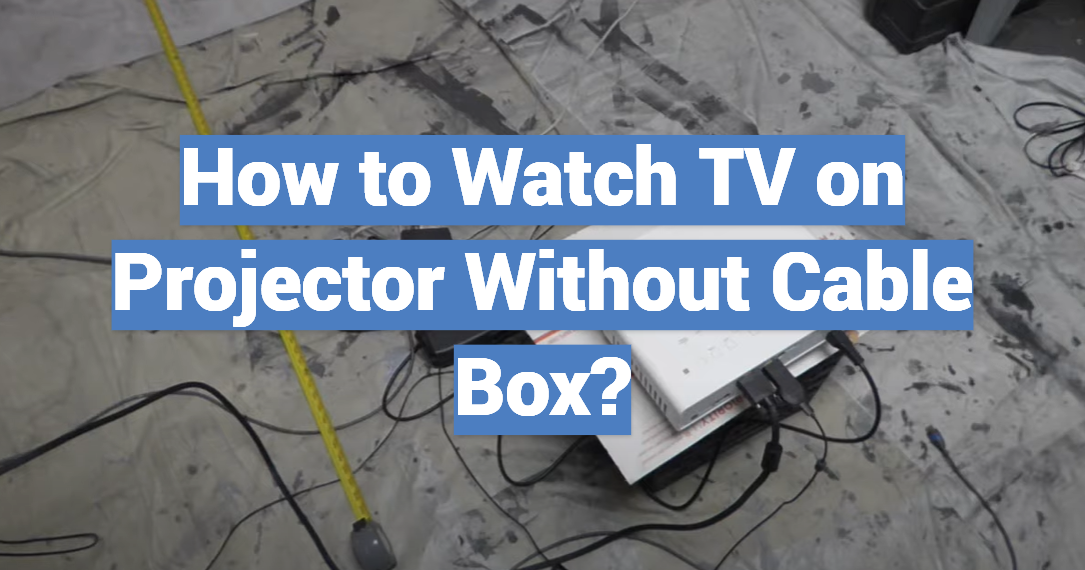




Leave a Review